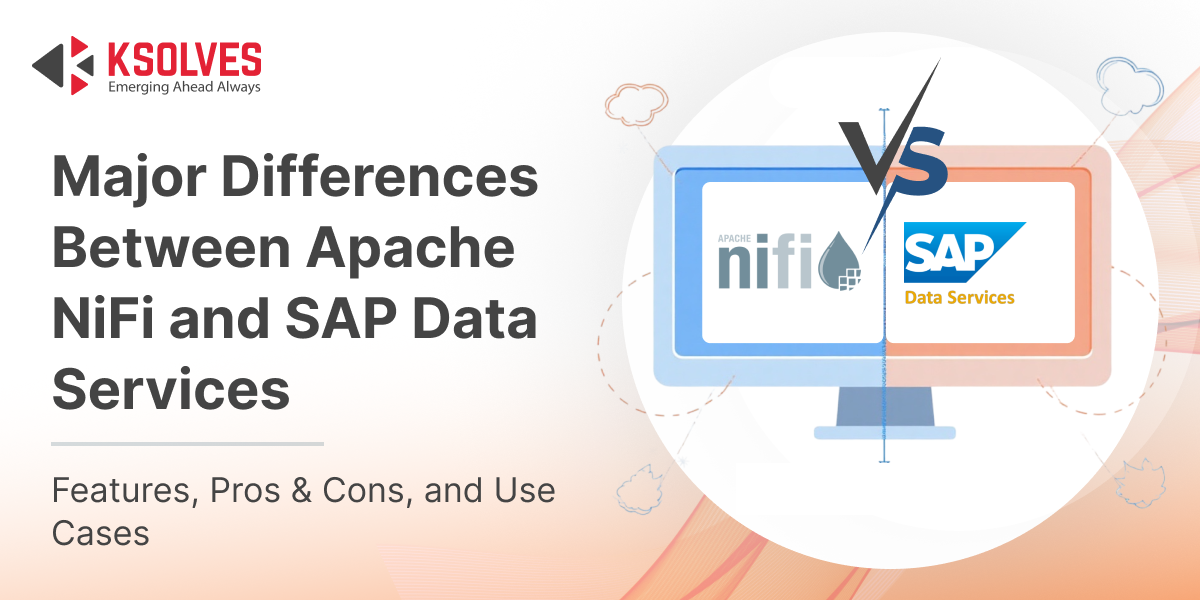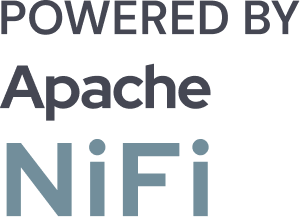Apache NiFi vs SAP Data Services – Choosing the Right Tool for Your Business
![]()

In an age where data is the backbone of business operations, the tools used to handle, process, and move that data are crucial to success. With organizations collecting vast amounts of data across various systems, it’s vital to choose the right data integration tool. Two popular names in the world of data integration are Apache NiFi and SAP Data Services. But how do they stack up against each other?
While both tools promise to make data integration simpler, their approaches are starkly different. Apache NiFi offers real-time, event-driven capabilities with a flexible, open-source framework, while SAP Data Services brings strong transformation features, built-in data quality, and deep integration with the SAP ecosystem. So, which one is the better fit for your business?
In this blog, we’ll break down these two platforms to help you make an informed decision based on your organization’s unique needs and goals.
What is Apache NiFi?
Apache NiFi is an open-source data integration and distribution framework designed to automate the flow of data between systems. Originally developed by the NSA and now managed by the Apache Software Foundation, NiFi supports flow-based programming, making it ideal for real-time and event-driven architectures.
With its drag-and-drop UI, users can create complex data pipelines without writing custom code. It supports various protocols (HTTP, FTP, Kafka, MQTT), offers backpressure and prioritization mechanisms, and has built-in data provenance tracking.
Bonus: For smoother multi-environment NiFi data flow deployments (like Dev, QA, and Prod), Data Flow Manager is a game-changer. It lets you deploy and promote NiFi flows in minutes, without using the traditional NiFi UI. Audit logs and role-based access control ensure transparency, security, and accountability across your flow deployment lifecycle. In addition, the AI-powered flow creation assistant saves time required to design NiFi flows manually, reducing development effort.
What is SAP Data Services?
SAP Data Services is an enterprise-grade ETL and data quality platform that enables organizations to extract, transform, and load structured data from multiple sources into SAP or non-SAP environments. It integrates tightly with the SAP ecosystem and offers advanced data profiling, cleansing, and transformation capabilities.
SAP Data Services is favored by organizations looking for data accuracy, governance, and analytics-readiness, especially within SAP landscapes.
Apache NiFi vs SAP Data Services – A Comprehensive Comparison
| Parameters | Apache NiFi | SAP Data Services |
| Overview | Open-source, flow-based tool for real-time data movement and automation. Developed by the NSA and donated to Apache. | Enterprise-grade ETL and data quality platform, designed for batch data integration and cleansing. A core part of the SAP Business Technology ecosystem. |
| Architecture | Flow-based programming with a visual drag-and-drop UI. Supports event-driven and real-time streaming pipelines. | Traditional ETL architecture with job-based processing. Strong focus on structured data and enterprise data warehouses. |
| Integration Capabilities | Protocol-agnostic (HTTP, SFTP, Kafka, MQTT, JDBC, etc.). Excellent for hybrid environments and custom connectors. | Deep integration with SAP HANA, SAP ERP, SAP BW, and other enterprise databases. Limited out-of-the-box connectors for non-SAP tools. |
| Data Processing | Supports both streaming and batch. Ideal for real-time and near-real-time data ingestion, routing, and lightweight transformation. | Primarily designed for batch ETL with powerful data cleansing, profiling, and transformation features. |
| User Interface | Visual interface for pipeline design. Easy to monitor and manage data flows visually. | Graphical interface for data flows with strong metadata management and transformation logic. More complex to master. |
| Scalability | Highly scalable with clustering, backpressure control, and queue prioritization. Suitable for large-scale, distributed systems. | Scalable within SAP environments. Can handle high data volumes but may require additional infrastructure for performance. |
| Extensibility | Open-source and highly extensible with custom processors and scripts (Java, Groovy, etc.). | Limited extensibility. Mostly designed to work within SAP’s structured environment. |
| Security & Governance | Offers fine-grained access control, SSL, encryption, and data provenance tracking. | Enterprise-level governance with strong data quality, lineage, and regulatory compliance capabilities. |
| Deployment | Flexible deployment across cloud, on-premise, and hybrid environments. | Best suited for SAP-dominated enterprise environments. More rigid in non-SAP ecosystems. |
| Learning Curve | Easier for developers familiar with dataflow concepts and scripting. | Steeper learning curve, especially for non-SAP users. Requires knowledge of SAP data structures. |
Apache NiFi vs SAP Data Services – Key Features
Apache NiFi Features
- Visual Data Flow Designer: Drag-and-drop interface to create complex data pipelines without coding.
- Data Provenance: End-to-end tracking of data movement for better governance.
- Real-Time Streaming: Supports continuous data ingestion and event-driven processing.
- Extensible Processors: Hundreds of built-in processors with support for custom plugins.
- Back Pressure & Prioritization: Manage high-volume data traffic smoothly with intelligent queuing.
- Protocol Support: Handles diverse formats and protocols like HTTP, FTP, Kafka, MQTT, JDBC, etc.
SAP Data Services Features
- Enterprise ETL Capabilities: Robust batch processing and powerful transformation engine.
- Data Quality Tools: Includes profiling, cleansing, and deduplication for clean, trustworthy data.
- Tight SAP Integration: Seamlessly connects with SAP HANA, SAP BW, and other SAP systems.
- Metadata Management: Strong support for metadata repositories and lineage tracking.
- Pre-built Transforms: Extensive library of built-in transforms and functions.
- Security & Compliance: Built-in enterprise security and audit controls for data governance.
Apache NiFi vs SAP Data Services – Pros and Cons
Pros of Apache NiFi
- Easy-to-use UI for quick pipeline creation.
- Supports real-time and batch workflows.
- Highly customizable and open-source.
- Strong community support and flexibility.
- Ideal for hybrid and non-SAP environments.
Cons of Apache NiFi
- Not built for complex enterprise data cleansing.
- Lacks advanced metadata management features.
- Requires external tools for enterprise-grade governance.
Pros of SAP Data Services
- Deeply integrated with SAP ecosystems.
- Strong focus on data quality and metadata.
- Enterprise-ready with governance and compliance built in.
- Ideal for structured, batch-oriented data transformations.
Cons of SAP Data Services
- High cost and licensing complexity.
- Steeper learning curve for non-SAP users.
- Limited flexibility for non-SAP or real-time use cases.
- Slower iteration cycles for agile development.
Apache NiFi vs SAP Data Services – Use Cases
Apache NiFi Use Cases
- Real-time streaming pipelines for IoT, logs, and alerts.
- Cloud-to-on-premise or hybrid integrations.
- Secure data flow automation across environments.
- Scalable ingestion for data lakes and analytics platforms.
SAP Data Services Use Cases
- Enterprise ETL for structured business data.
- SAP-to-SAP data integration and migration.
- Centralized data quality and governance workflows.
- Batch processing for data warehouses and reporting systems.
Conclusion
Both Apache NiFi and SAP Data Services are powerful in their own ways, but serve different needs.
If you’re focused on real-time streaming, hybrid architectures, or open-source flexibility, Apache NiFi is a great fit, especially when paired with Data Flow Manager to enable NiFi data flow deployments in minutes.
On the other hand, if your ecosystem is heavily SAP-driven and your data needs revolve around batch ETL, governance, and data quality, SAP Data Services offers a mature and enterprise-ready solution.
Choose based on your data landscape, integration needs, and scalability goals.
![]()

